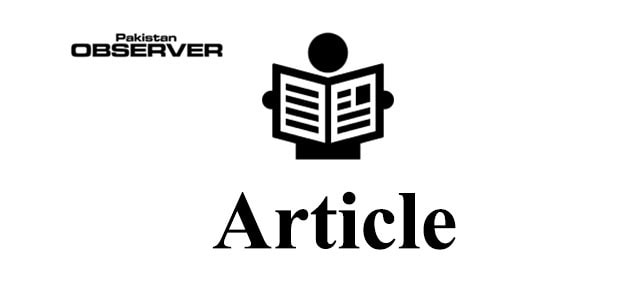Youth bulge: Demographic dividend or disaster?
SINCE the 1990s, Pakistan has had a ‘youth bulge’, which means that the greater part of our population is young, between 15 to 29 years of age.
This trend is estimated to continue somewhere past 2050, at which point the greater part of our population will start to age.
At this moment in time, 64 percent of the Pakistani population is under 30 years of age, while 29 percent belongs to the 15 to 29 years age bracket.
By 2030, our total population will have increased to around 280 million, 100 million of which will be made up exclusively by the youth.
Clearly, Pakistan is now a youth-dominant state, and will remain so for the next few decades.
With the 9th largest labour force in the world, as stated by the CIA World Factbook, this youth bulge could truly be a demographic bonus for us if it is developed properly.
In the unfortunate case that it is not, we are well on our way to facing a demographic disaster.
According to the Prime Minister’s Youth Programme website, all projects under the initiative’s umbrella belong to the categories of education, employment and engagement.
While the initiative is applaudable, is it effective and intense enough to deal with the volume of the problem it must face?
In the category of education and literacy, the bigger portion of our youth bulge exists in the rural portion of the country.
This automatically puts them on an unequal footing with the urban population, especially in regards to access to quality education.
Another disparity exists between the genders; only 13 per cent of girls reach the ninth grade, while around 12 million girls remain out of school.
The funnel effect between the enrollment rates of primary schools versus middle schools is an issue for both genders: roughly 22.5 million children enroll in primary schools annually, but this drops drastically to 7 million at the middle school level.
What education is imparted is plagued with numerous other issues too- overage enrollment, an increasing gap between educational syllabus and industry requirements at the higher education level, and a lacking focus on vocational training.
While the state of literacy and education in Pakistan is bad enough as a standalone issue, it also feeds and exacerbates the unemployment crisis that young people have to face.
According to the Pakistan Labour Force Survey 2020-2021, out of the 4.51 million unemployed people of working age, around 75.9 percent belong to the 15 to 34 years age bracket.
The same age bracket only corresponds to around 50 per cent of the labour force, thus putting them as the most severely affected by unemployment.
While the youth initiatives put forward by successive governments have succeeded in creating new jobs, the volume of jobs created is still too low to accommodate the 1.5 million new workers that enter the market yearly in Pakistan.
The crises do not end here; engagement of the youth in legislation and policy making as the biggest stakeholder group making up the population is still shamefully lacking.
According to the Pakistan Youth Development Index 2021, out of the 5 domains of factors affecting young people, civic and political participation is the domain performing the worst.
Since the 18th Amendment, youth affairs have become the responsibility of the provinces, though how seriously they have been taken can be seen in how outdated these policies are: Punjab’s last youth policy was put forward in 2012, Khyber Pakhtunkhwa’s in 2016, and Sindh’s in 2018, while the Balochistan Youth Policy only exists as a draft since 2015 and is yet to be tabled, 7 years on.
Many youth representatives in the government do not themselves count as a member of the youth age bracket at all, and student unions remain banned even three decades later.
Political participation in Pakistan is severely lacking at the grassroots level, and poses a question to whether a country can aim towards true democracy while much of its population remains unparticipative in its politics, unaware and kept out of the process of policy making that affects their life.
—To be continued. —The writers are contributing columnist.










